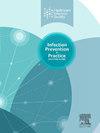Antibiotic prophylaxis practice in gastrointestinal surgery in five hospitals in southern Benin
IF 1.9
Q3 INFECTIOUS DISEASES
引用次数: 0
Abstract
Background
Benin's healthcare system is characterized by a lack of local guidelines for surgical antibiotic prophylaxis (SAP), which is essential to prevent surgical site infection.
Aim
To audit compliance for SAP practices in gastrointestinal surgery.
Methods
Data were prospectively collected from gastrointestinal surgery departments in five hospitals. Over a four month period, SAP was assessed using five conventional criteria (indication, choice of antibiotic, dosage, timing, and duration of administration) among patients admitted for Altemeier class 1 or 2 procedures. Three guidelines were used as reference: World Health Organization (WHO), American Society of Health-System Pharmacists (ASHP)and French Society of Anaesthesia and Intensive Care Medicine (SFAR).
Findings
Of 68 surgical interventions, overall compliance with WHO, ASHP, and SFAR was observed in zero (0.0%), one case (1.5%) and two cases (2.9%), respectively. Compliance with indication varied according to the guidelines: 65 (95.6%) were compliant with WHO and ASHP and 47 cases (69.11%) with SFAR. Among compliant cases, the antibiotics administered were rarely selected according to guidelines: WHO, 2 (2.9%) and ASHP, 2 (2.9%), and SFAR, 3 (4.4%). Drug dosage compliance varied from 20 (29.4%) (SFAR) to 49 (72.0%) (ASHP). Timings were respected in 47 (69.1%; WHO), 45 (66.2%; ASHP) and 9 cases (13.2%; SFAR). The number of cases compliant with antibiotic prophylaxis duration were 13 (19.1%; WHO), 17 (25.0%; ASHP) and 16 (23.5%; SFAR).
Conclusion
The SAP compliance rate in gastrointestinal surgery based on the five conventional criteria was very low. SAP guidelines must be implemented appropriately for local bacteriological epidemiology.
贝宁南部五家医院胃肠道手术中的抗生素预防措施
背景贝宁医疗系统的特点是缺乏手术抗生素预防(SAP)的地方指南,而这对于预防手术部位感染至关重要。在四个月的时间内,采用五项常规标准(适应症、抗生素选择、剂量、给药时间和持续时间)对接受 Altemeier 1 级或 2 级手术的患者进行 SAP 评估。参考了三份指南:在 68 例手术干预中,符合世界卫生组织(WHO)、美国卫生系统药剂师协会(ASHP)和法国麻醉与重症监护医学会(SFAR)标准的病例分别为 0 例(0.0%)、1 例(1.5%)和 2 例(2.9%)。不同指南对适应症的遵守情况各不相同:65例(95.6%)符合WHO和ASHP标准,47例(69.11%)符合SFAR标准。在符合要求的病例中,很少根据指南选择抗生素:符合 WHO 和 ASHP 标准的病例分别为 2 例(2.9%)和 2 例(2.9%),符合 SFAR 标准的病例为 3 例(4.4%)。遵守药物剂量规定的情况从 20 例(29.4%)(SFAR)到 49 例(72.0%)(ASHP)不等。47例(69.1%;WHO)、45例(66.2%;ASHP)和9例(13.2%;SFAR)遵守了用药时间。符合抗生素预防期限的病例数分别为 13 例(19.1%;WHO)、17 例(25.0%;ASHP)和 16 例(23.5%;SFAR)。必须根据当地的细菌流行病学情况适当执行 SAP 指南。
本文章由计算机程序翻译,如有差异,请以英文原文为准。
求助全文
约1分钟内获得全文
求助全文
来源期刊

Infection Prevention in Practice
Medicine-Public Health, Environmental and Occupational Health
CiteScore
4.80
自引率
0.00%
发文量
58
审稿时长
61 days
 求助内容:
求助内容: 应助结果提醒方式:
应助结果提醒方式:


